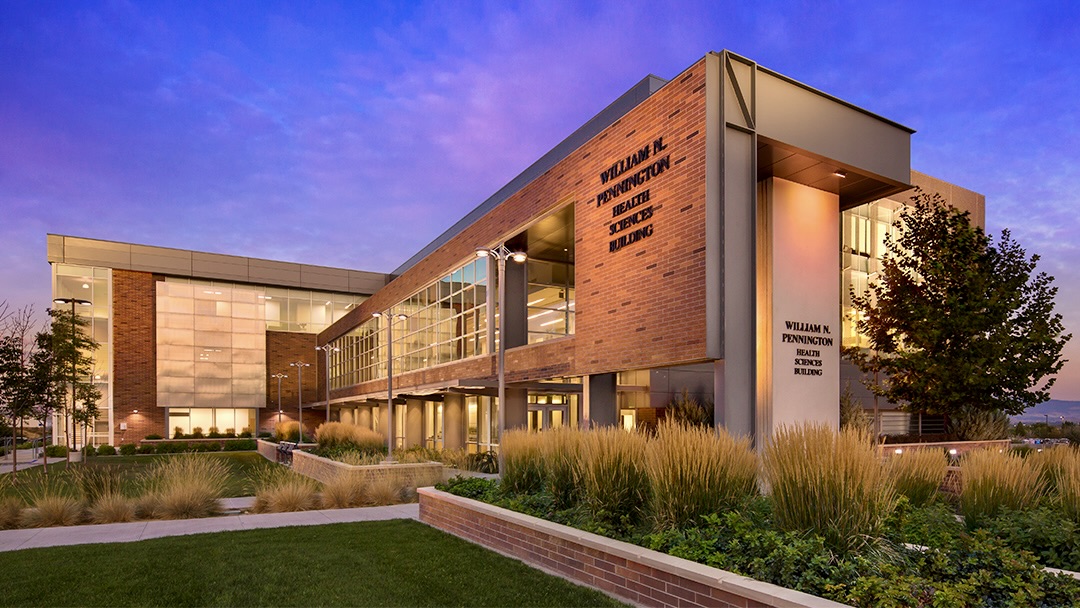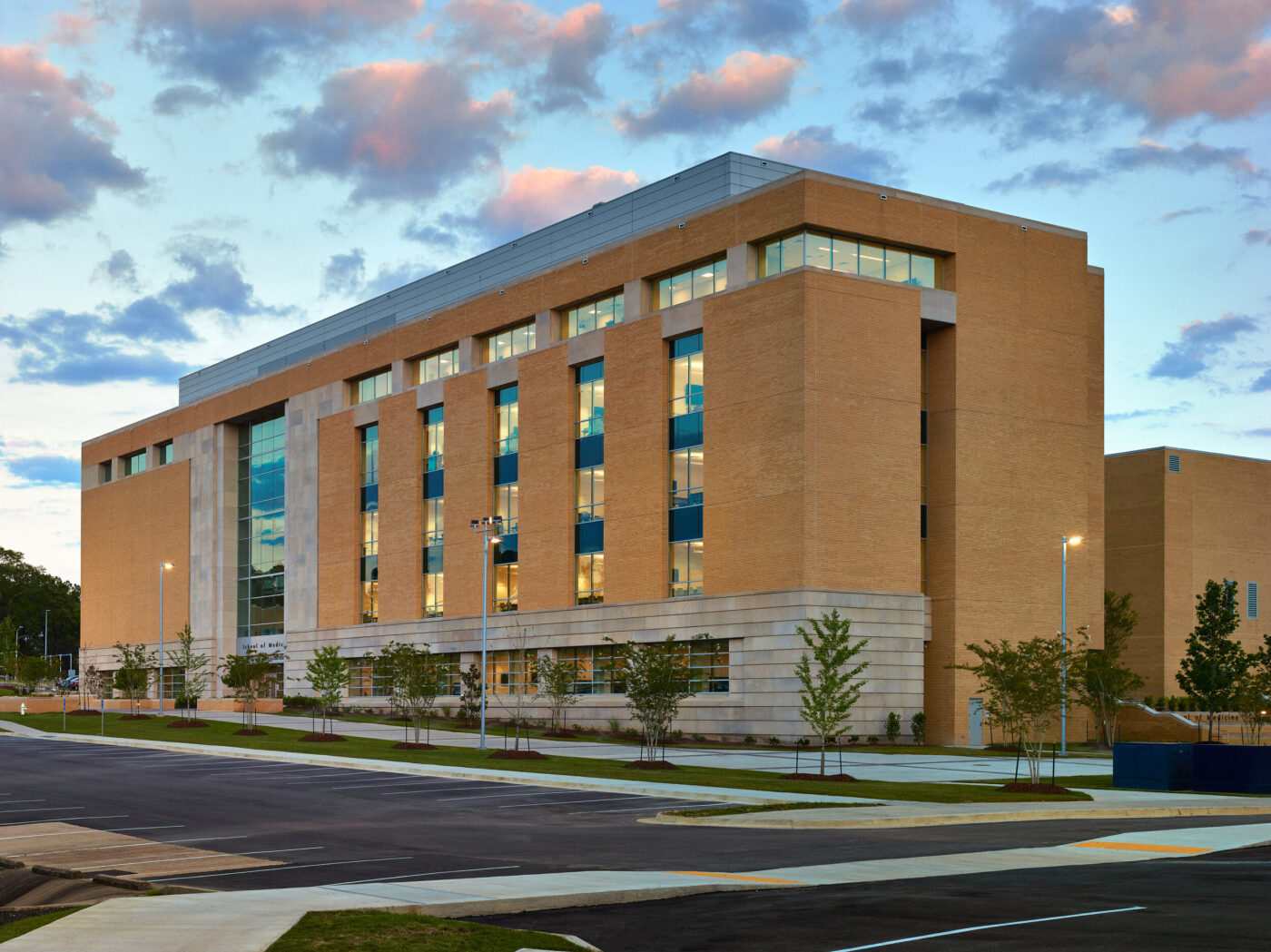The medical field is one of the most popular and competitive industries out there. Every year, tens of thousands of students compete for a limited number of seats in medical schools across the country.
With such high competition, it can be daunting to think about applying to medical school, even if you have a good academic track record and quality pre-med experience.
But don’t worry – we’re here to help. In this article, we’ll go over the best of the easiest medical schools to get into in 2022. These schools may not be Ivy League, but they’re still great institutions that will give you quality education and prepare you for a successful career in medicine. In fact, many of them rank high in key categories like primary care, family medicine, and clinical research.
Why Are Medical Schools So Hard To Get Into?
Medical school is notoriously difficult to get into compared to other graduate programs. In fact, it is one of the most competitive professional schools to get into in the United States.
There are several reasons for this. First, the pool of applicants is extremely large relative to the number of spots available. In recent years, over 60,000 applicants have been counted per application cycle, with only around 20,000 getting accepted. Additionally, most candidates send multiple applications. In 2019-2020, nearly 900,000 applications were submitted to medical schools across the country.
The number of applicants has increased in recent years as well, by about 38% in the past decade. The AAMC reports that enrollment has also increased at about this rate — class sizes have grown by 37% since 2002.
An increase in overall enrollment has not made medical school admissions any less competitive — on average. New medical schools are not being produced at a consistent rate, and not all existing schools are expanding their enrollment to keep up with an increasing number of applicants. However, many schools on this list are easier to get into precisely because of a dedicated effort to expand enrollment and address physician shortages. This includes expanding teaching facilities, constructing new campuses, increasing class sizes, and growing faculty.
Competition due to a limited number of medical schools and seats is only one piece of the puzzle. The reality is completing an MD, DO, PA, or other medical degree is hard work. Medical schools must vet candidates based on their ability to perform in the program and complete it. This includes personality traits and pre-med experience in addition to high levels of academic achievement.
So, in our lifetime, it will likely always be the case that medical school is tough to get into. While we hope the infrastructure for training doctors progresses along with the increasing demand for them, at present, the number of medical schools and residencies are not keeping up.
This has led to an increased focus on how to get into medical school, as even extremely qualified candidates face challenges during the application process. High school students interested in health professions are starting to plan earlier and taking more deliberate steps to make themselves attractive candidates. But even the most organized applicant may find themselves wondering how to get into medical school.
Fortunately, organizations such as IMA have stepped up to help future physicians navigate the difficulties of getting into medical school. We publish new resources every week, provide medical school admissions consulting, and help pre-med students gain compelling, hands-on clinical experience through our healthcare and pre-med internships.
The Reality of America's Physician Shortage
Some pre-med students are reluctant to consider the easiest medical schools to get into. After all, the “easiest” school may have lower admissions standards, which could be perceived as a sign that the program is not as good as its more competitive counterparts.
While it’s true the highest-ranking schools are often the most competitive, many schools on this list have accolades similar to medical schools with acceptance rates below 5%. It’s just not the case that the more competitive a medical school is, the better it is.
In fact, considering the bigger picture, these schools are crucial for training the next generation of doctors we so desperately need. America is currently facing a doctor shortage — specifically in primary care and psychiatry, but the shortage spans multiple disciplines and specialties.
The American Medical Association is one of the many voices sounding the alarm on America’s physician shortage. Rural, inner-city, and other underserved communities are feeling the effects of this shortage the most.
The Association of American Medical Colleges predicts that by 2034, there will be a shortage of up to 122,000 physicians in the United States. This includes primary care and non-primary care physicians, and surgical and other specialties.
These numbers don’t even capture the reality of the situation. Due to socio-economic and geographical barriers to access, many people who should be going to the doctor don’t. If these communities were more able to access healthcare, the shortage would be measured even more drastically, with up to 180,400 physicians needed to meet demand.
Of course, becoming a practicing physician in, say, a rural underserved area is not the only ambition students have when pursuing a career in healthcare. Fascination with certain fields of medicine, a desire to help people in a particular way, or the opportunity to develop cutting-edge technology are all common motivations. But if your goal is to become a physician and help alleviate America’s doctor shortage, attending one of the easier medical schools to get into may be the best way to achieve that.
Helping with the physician shortage or being one of the easiest medical schools to get into is not the only criteria for this list, however. The schools on this list have been vetted for their ability to prepare students for the USMLE exams, provide a solid foundation in medical knowledge, and instill the values and skills required for success as a physician, clinical scientist, or other healthcare professional.
What Are the Requirements for Enrolling in Medical School?
In the list below, we include specific application requirements each school has published, such as minimum GPA and MCAT score. However, nearly every medical school will require the following, at least:
- The completion of a four-year undergraduate degree from an accredited institution
- Strong GPA and MCAT score
- Clinical experience, such as healthcare and pre-med internships
- Volunteer work
- Letters of recommendation
- Pre-requisite undergraduate coursework
As we’ve discussed, even easy-to-get-into medical schools are quite competitive. Minimum application requirements are used to help admissions committees lessen the workload of evaluating applications, and meeting these requirements doesn’t guarantee an interview. However, many of these schools conduct holistic reviews of candidates, meaning they evaluate applicants on more than just their grades and test scores.
Holistic reviews give weight to an applicant’s life experiences, such as their clinical experience, volunteer work, letters of recommendation, and personal statements. Therefore, having a strong academic record is not the only way to make your application stand out. Demonstrating a commitment to serving others, having clinical experience in underserved communities, and writing an intelligent and compelling personal essay about your interests in medicine are all ways to make your application more competitive.
At IMA, we know that for most candidates personalized guidance is the key to putting together a strong medical school application. We have decades of experience working with students just like you, and we’re here to support you through every step of the process. If you’re applying to medical schools, take a moment to learn more about our medical school admissions consulting.
Additionally, our healthcare internships abroad are an excellent way to gain clinical experience in underserved communities while building a strong centerpiece for your secondary application and interview discussions. Our programs include multiple specialties, hands-on service learning, physician shadowing, access to Harvard’s online medical courses, MCAT prep, admissions consulting, and — believe it or not — more. Learn more about our healthcare and pre-med internships and how you can spend your academic breaks participating in one of the most immersive, responsible, and memorable clinical programs in the world.
What Are the Easiest Medical Schools To Get Into?
Below, we’ve compiled a list of the easiest medical schools to get into in 2022 based on admissions statistics and the quality of medical programs offered.
Keep in mind that many schools give preference to candidates based on residency status. If none of the schools listed below are in your home state, consider applying to schools in states where you have residency status. You’ll often be more likely to get in and will usually pay lower tuition.
Some of the schools listed give preference based on region. For instance, the University of New Mexico School of Medicine will give more weight to candidates from western states that don’t have medical schools.
Finally, research whether or not the school is right for you. Just because a school is easier to get into doesn’t mean it’s the best choice for you. We’ve done our best to compile a solid list of great schools with proven track records, but you should still make sure the school is a good fit for your needs. Consider the location, available programs, residency match data, and curriculum when making your decision.
Without further ado, here are the easiest medical schools to get into in 2022.

In addition to the schools of Dentistry, Nursing, Pharmacy, Population Health, and Health Related Professions, the University of Mississippi Medical Center houses the School of Medicine, one of the easiest medical schools to get into in 2022.
UMMC is Mississippi’s only academic medical center. The UMMC School of Medicine is part of the University of Mississippi, aka, Ole Miss. While Ole Miss is located in Oxford, MS, the UM Medical Center School of Medicine’s campus is in Jackson, MS. Jackson is the capital of Mississippi and the largest city in the state.
The UMMC School of Medicine offers an MD program. The UM Medical Center also houses several other degree programs, such as Masters in Health Systems Administration, Doctor of Nursing Practice (DNP), Masters in Population Health Science, and Ph.D. in Biostatistics and Data Science.
The school is accredited by the Southern Association of Colleges and Schools Commission on Colleges.
- Acceptance Rate: 47%
- Average GPA: 3.8
- Average MCAT Score: 505
- MD Tuition: $31,197
- Average Yearly Enrollment: 643
- Stated Requirements: Minimum 496 MCAT score, 35 hours of clinical shadowing
- School Rankings: #2 in Most Graduates Practicing in Medically Underserved Areas, #3 in Most Graduates Practicing in Rural Areas, #55 in Most Graduates Practicing in Primary Care Fields
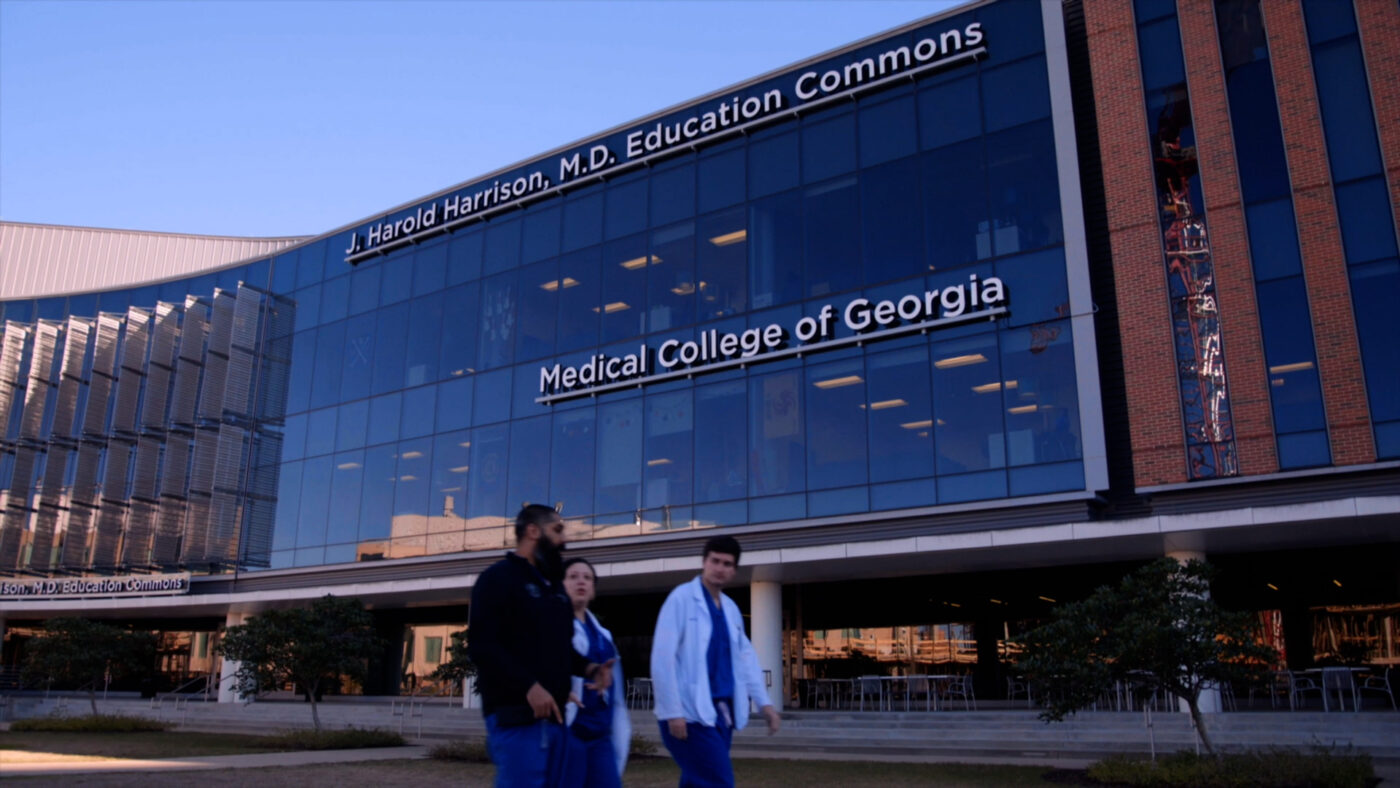
Augusta University’s Medical College of Georgia is one of the largest medical schools in the country. The Medical College of Georgia is also one of the oldest medical schools in the country — it was the third medical school created in the American southeast.
In the past decade, the school has made it its mission to address the physician shortage in Georgia by expanding the school to absorb more medical students. The AU Medical College of Georgia has campuses throughout the state and is constantly expanding its departments and facilities.
The Medical College of Georgia awards MD, MD/Ph.D., MD/MPH, and MD/MBA degrees.
AUMCG is Georgia’s only public medical school and is accredited by the Southern Association of Colleges and Schools Commission on Colleges.
- Acceptance Rate: 12%
- Average GPA: 3.7
- Average MCAT Score: 509
- MD Tuition: $28,358 in-state, $56,716 out-of-state
- Average Yearly Enrollment: 930
- Admissions Requirements: Minimum 3.7 GPA and 496 MCAT score
- School Rankings: #82 in Best Medical Schools: Research, #94 in Best Medical Schools: Primary Care

Located in Grand Forks, North Dakota, the University of North Dakota’s School of Medicine is the only medical school in the state. When someone goes to the doctor in North Dakota, there’s a fifty-fifty chance they were trained at one of UND SOM’s four campuses.
The North Dakota School of Medicine is known for training many of the Native American physicians in the country, its first-of-a-kind Indigenous Health doctoral degree program, and being one of the top training grounds for rural healthcare.
UND offers over 65 doctoral, master’s, Ph.D., and professional training programs in health and medicine. The School of Medicine offers MD, dual, and Ph.D. degrees. The school is accredited by the Higher Learning Commission.
- Acceptance Rate: 18%
- Average GPA: 3.8
- Average MCAT Score: 507
- MD Tuition: $34,762 in-state, $61,630 out-of-state
- Average Yearly Enrollment: 296
- Admissions Requirements: Minimum 3.0 GPA
- School Rankings: #13 in Most Graduates Practicing in Rural Areas, #37 in Most Graduates Practicing in Primary Care Fields

Commissioned by the governor of Louisiana in 1931, The LSU School of Medicine in New Orleans expanded to six health and sciences schools by 2003. In the past decade, the school’s newly constructed research facilities have become a center of biomedical research in Louisiana.
The LSU School of Medicine in New Orleans offers MD, MD/Ph.D., and MD/MPH degrees. It is accredited by the Southern Association of Colleges and Schools Commission on Colleges.
- Acceptance Rate: 20%
- Average GPA: 3.8
- Average MCAT Score: 509
- MD Tuition: $32,936.95 in-state, $61,114.29 out-of-state
- Average Yearly Enrollment: 712
- Admissions Requirements: No specified GPA/MCAT requirements to apply
- School Rankings: #19 in Most Graduates Practicing in Medically Underserved Areas, #81 in Most Graduates Practicing in Rural Areas
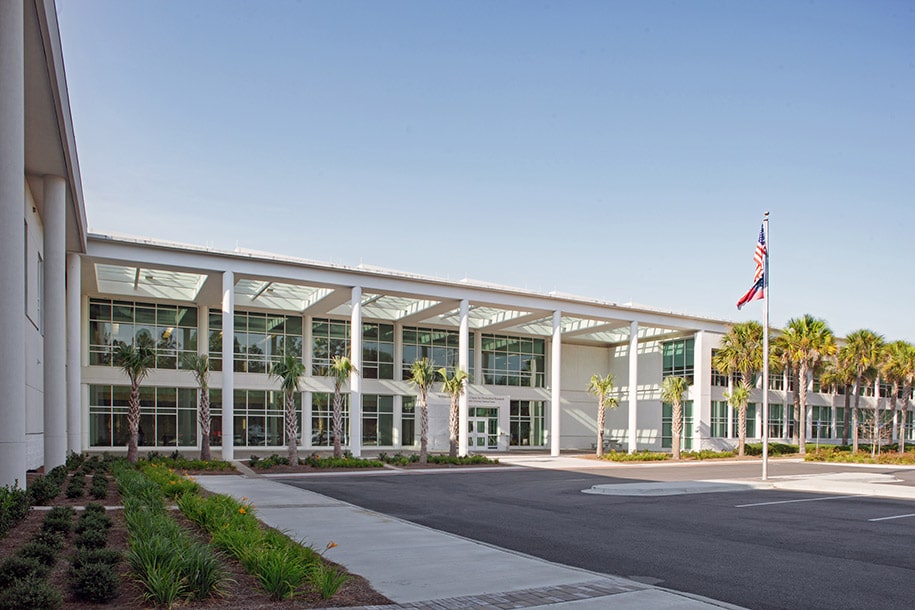
The Mercer University School of Medicine was founded in 1982 and has campuses in Macon, Savannah, and Columbus. Students study at the largest hospitals in the state and have the option to pursue a doctoral degree in Rural Health Sciences.
The MU School of Medicine only accepts applicants from Georgia in an effort to increase the number of primary care physicians in the state. If you are a resident of Georgia, you’re in luck: Mercer is one of the easiest medical schools to get into.
Mercer University’s School of Medicine offers MD, MS, MFT, and Ph.D. degrees. The school is accredited by the Commission on Colleges of the Southern Association of Colleges and Schools.
- Acceptance Rate: 10%
- Average GPA: 3.64
- Average MCAT Score: 504
- MD Tuition: $26,370
- Average Yearly Enrollment: 151
- Admissions Requirements: Minimum 3.0 GPA
- School Rankings: #8 in Most Graduates Practicing in Medically Underserved Areas, #41 in Most Graduates Practicing in Primary Care Fields, #25 in Most Graduates Practicing in Rural Areas
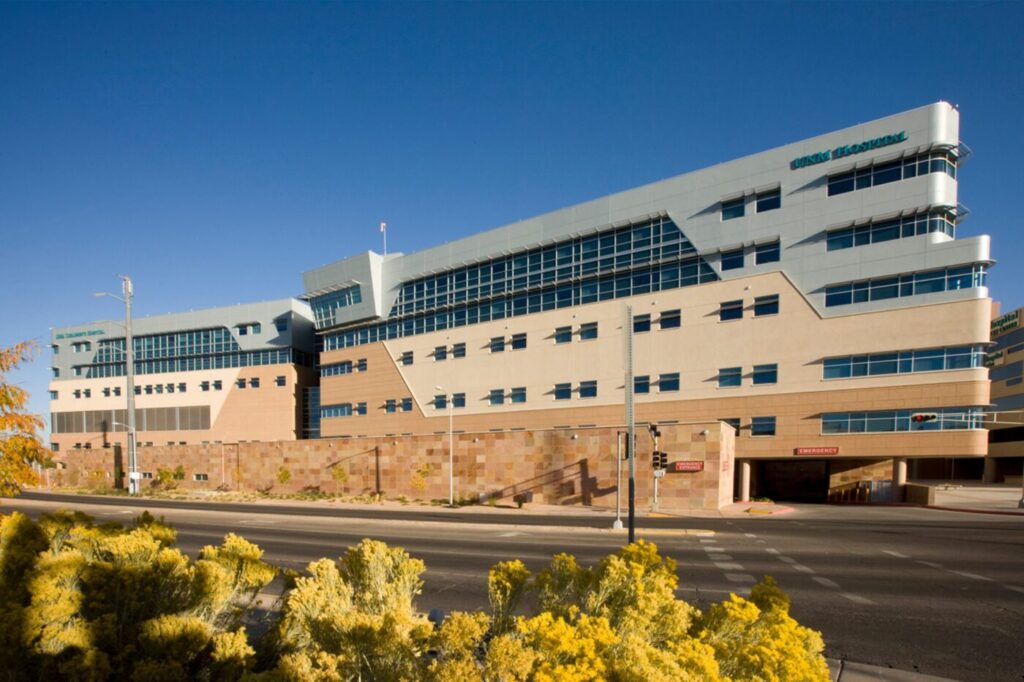
The UNM School of Medicine in Albuquerque, New Mexico teaches primarily at UNM Hospital, a safety net hospital and the state’s only Level I Trauma Center. The school gives preference to residents of New Mexico and western states that do not have medical schools.
University of New Mexico’s School of Medicine is one of the highest-ranked schools in the country for primary care and family medicine, all while being one of the easiest medical schools to get into. Additionally, it’s very affordable for residents of New Mexico compared to other medical schools.
UNM SOM offers multiple degree programs, including MD, Ph.D., and MS programs as well as dual-degree pathway programs for MD/Ph.D., MD/MPH, and BA/MD. The school is accredited by the Higher Learning Commission.
- Acceptance Rate: 9%
- Average GPA: 3.71
- Average MCAT Score: 505
- MD Tuition: $15,328 (in-state), $44,023 (out-of-state)
- Average Yearly Enrollment: 439
- Admissions Requirements: Minimum 3.00 GPA and 494 MCAT score
- School Rankings: #7 in Familiy Medicine, #16 in Best Medical Schools: Primary Care, #5 in Most Diverse Medical Schools
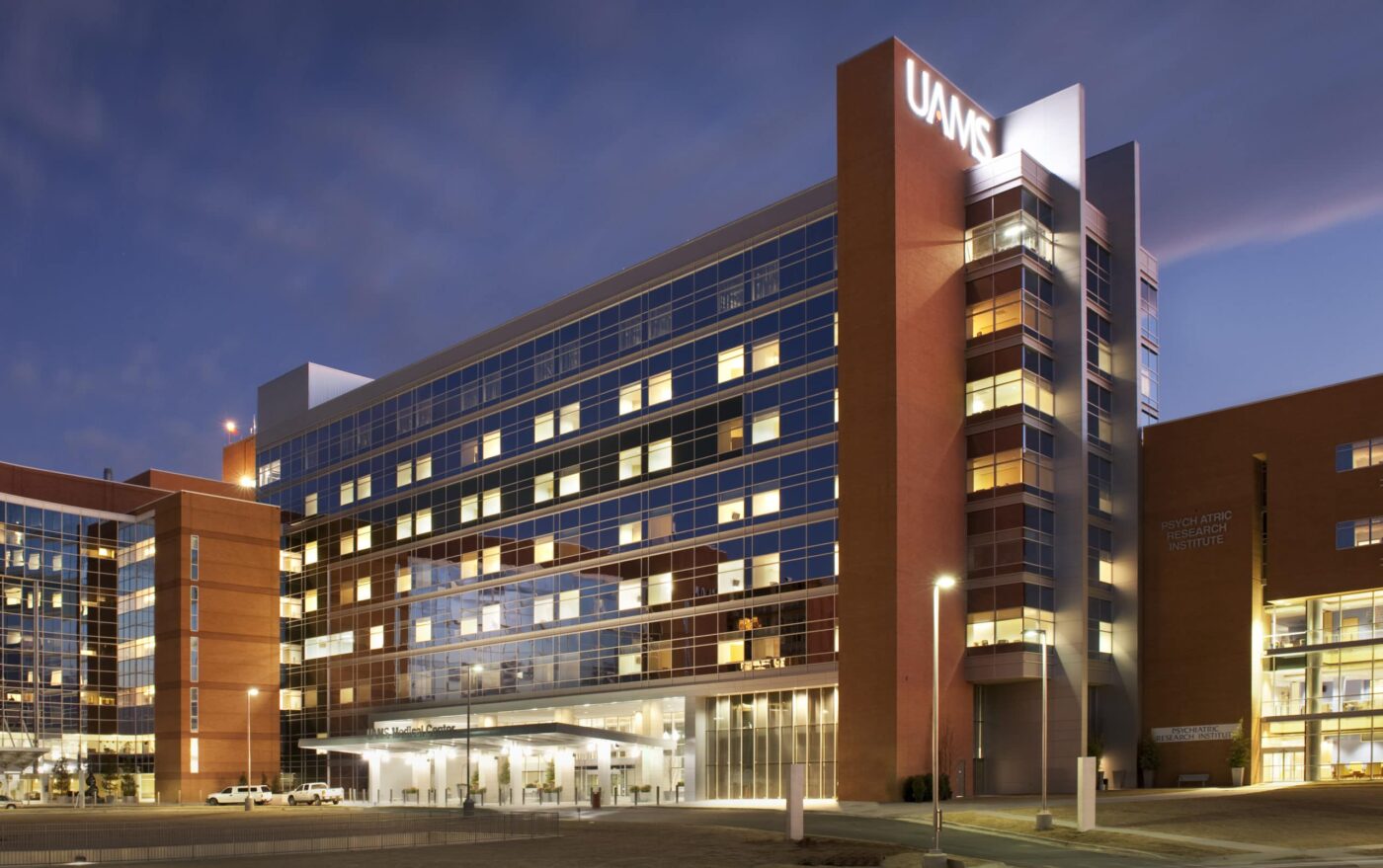
If you’re thinking of pursuing a dual degree in medicine and public health, the College of Medicine at the UA Medical Sciences College is certainly a school to consider.
Located in Little Rock, Arkansas, the UAMS College of Medicine is unique in solely offering MD/Ph.D. and MD/MPH degrees. Public health and rural healthcare are central to the school’s mission, as evidenced by the school’s curriculum, clinical sites, and degrees offered. The UAMS College of Medicine offers residents the opportunity to pay back their student loans by practicing in rural communities in the state.
The University of Arkansas Medical for Medical Sciences College of Medicine is accredited by the Higher Learning Commission.
- Acceptance Rate: 21%
- Average GPA: 3.84
- Average MCAT Score: 490
- MD/MPH Tuition: $33,010 (in-state), $65,180 (out-of-state)
- Average Yearly Enrollment: 490
- Admissions Requirements: Minimum 2.7 GPA
- School Rankings: #36 in Best Medical Schools: Primary Care, #74 in Best Medical Schools: Research, #20 in Most Graduates Practicing in Rural Areas
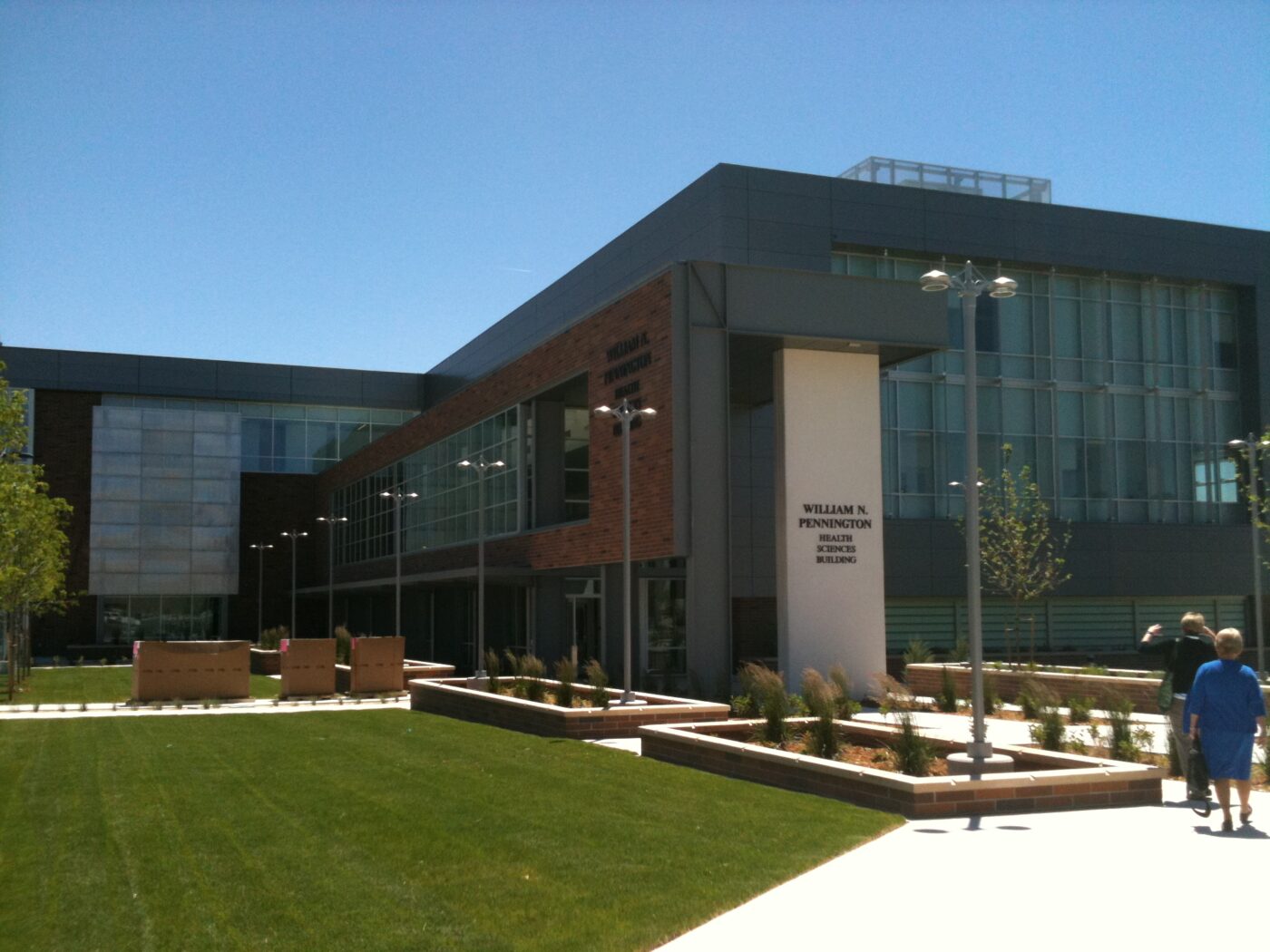
The UNR School of Medicine has been training physicians and clinical researchers in Nevada for over 50 years. The main campus is located in Reno and students spend their clinical years rotating in hospitals throughout greater Nevada.
Prospective students look forward to the small class sizes and diverse network of clinical training sites. Undergrads hoping to pursue a career in medicine can enroll in UNR’s BS-MD pathway, although the program paused for internal assessment as of 2022.
The University of Nevada, Reno School of Medicine is accredited by the Higher Learning Commission. The school offers MD, MD/MPH, MD/MBA, and MD/Ph.D. degrees.
- Acceptance Rate: 11.6%
- Average GPA: 3.63
- Average MCAT Score: 509
- MD Tuition: $31,056 (in-state), $57,704 (out-of-state)
- Average Yearly Enrollment: 324
- Admissions Requirements: Minimum 3.5 GPA and 497 MCAT score
- School Rankings: #95 in Best Medical School: Research, #94 in Best Medical School: Primary Care, #28 in Most Diverse Medical Schools, #41 in Most Graduates Practicing in Medically Underserved Areas
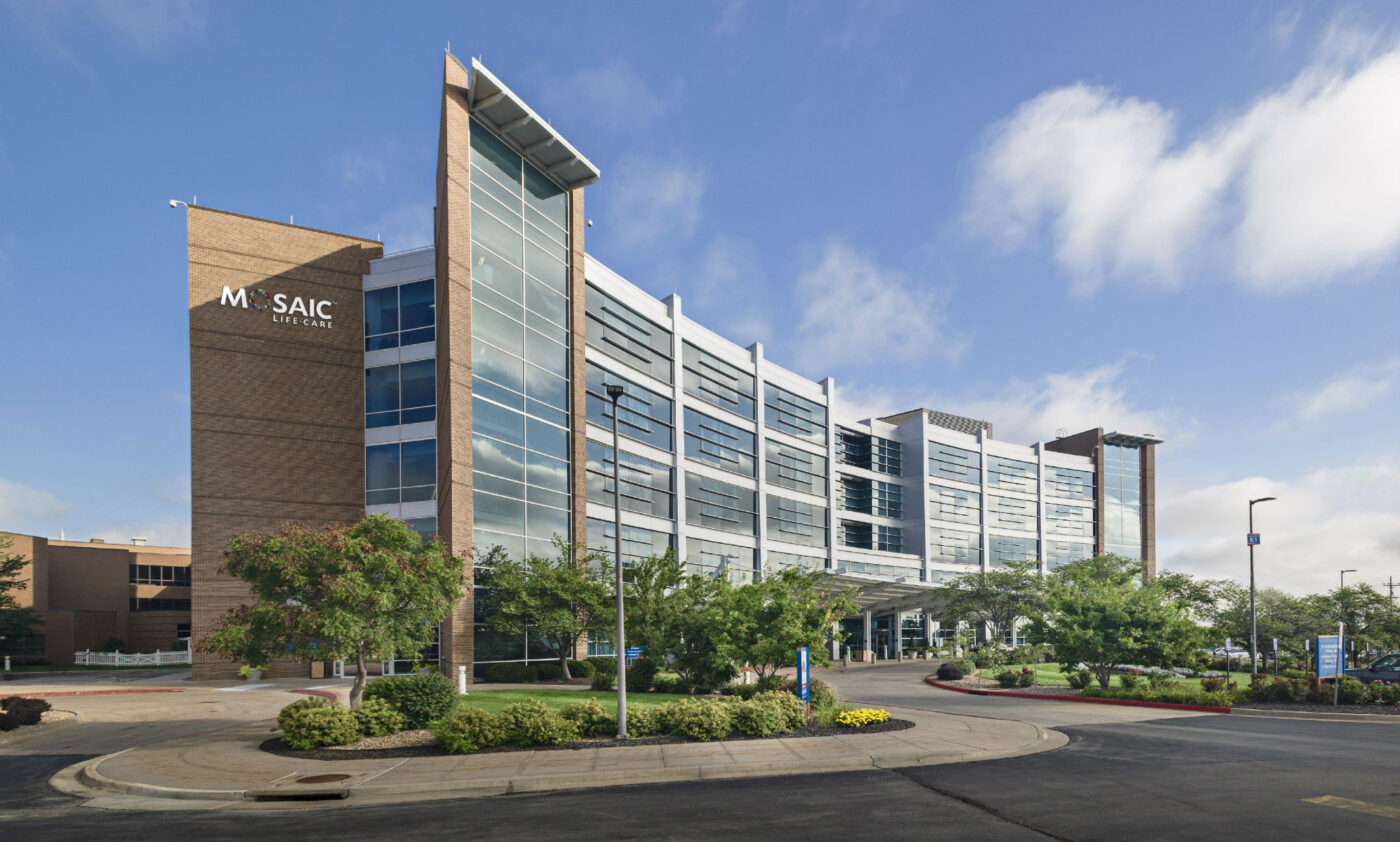
The UMKC School of Medicine is one of three medical schools in the area, known by local prospective medical students for its accelerated BA/MD program. Although the BA/MD program is highly competitive and requires a GPA of 3.9 to apply, the UMKC School of Medicine is one of the easiest medical schools to get into for students seeking MD programs.
The university uses three Kansas City hospitals and the Kansas City VA Medical Center as its primary teaching sites but is affiliated with over a dozen more regional healthcare institutions.
The University of Missouri-Kansas City School of Medicine is accredited by the Higher Learning Commission and offers MD, BS/MD, and Ph.D. degrees, Masters programs including Physician Assistant and Anesthesia, and EMS certification programs.
- Acceptance Rate: 21%
- Average GPA: 3.85
- Average MCAT Score: 510
- MD Tuition:
- Average Yearly Enrollment:
- Admissions Requirements: Minimum 3.0 GPA and 500 MCAT score
- School Rankings: #85 in Best Medical Schools: Research, #53 in Best Medical Schools: Primary Care, #29 in Most Graduates Practicing in Medically Underserved Areas
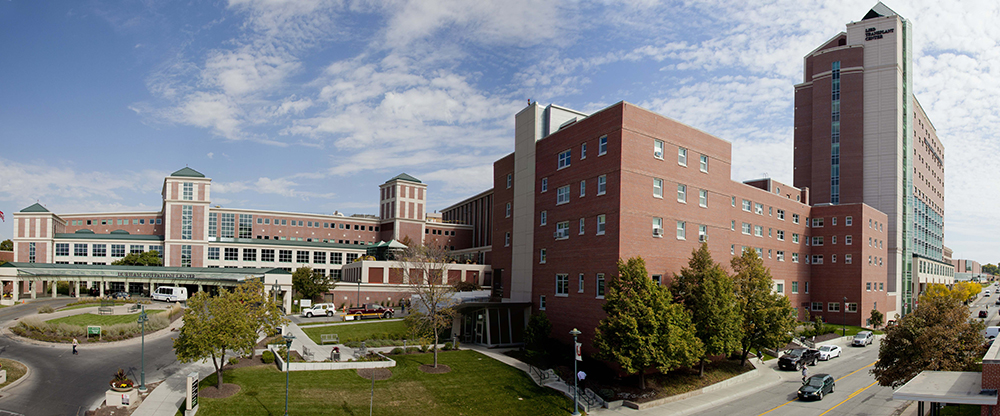
The University of Nebraska’s College of Medicine is located on UN’s Medical Center campus in Omaha. UNMC became a public university in 1902, though its history dates back to when it was founded in 1869.
The UN Medical Center is known for having the nation’s largest operational biocontainment unit, which is recognized by the United States government as one of only three facilities prepared to treat highly contagious patients.
The University of Nebraska Medical Center offers a wide range of medical degrees, from dentistry and nursing to public health and medicine. The school is accreditated by the Higher Learning Commission.
- Acceptance Rate: 9%
- Average GPA: 3.85
- Average MCAT Score: 512
- MD Tuition: $35,360 (in-state), $48,000 (out-of-state)
- Average Yearly Enrollment: 514
- Admissions Requirements: Minimum 3.75 GPA
- School Rankings: #7 in Best Medical Schools: Primary Care, #53 in Best Medical Schools: Research, #7 in Most Graduates Practicing in Rural Areas, #19 in Most Graduates Practicing in Medically Underserved Communities
We hope this list of the easiest medical schools to get into has been helpful. Here are some more resources to help you on your journey to becoming a doctor. As always, you can explore our site for plenty of free resources and quality services for medical and pre-med students.
Medical School Guides – IMA’s medical school guides take a comprehensive look at individual medical schools to help you prepare and focus your application. These ultimate guides cover each school’s selection criteria, programs, admissions guidelines, application essay prompts, and much more.
IMA’s Pre-Health Blog – This blog features in-depth articles, quick tips, and everything in between — all about medical school, healthcare careers, and many other healthcare topics. Some of IMA’s recent blogs include Experts Explain the MCAT Sections, How to Get Into New York Medical Colleges in 2022, and The Key Differences Between EMTs and Paramedics.
AAMC’s FIRST – FIRST stands for Financial Information, Resources, Services, and Tools. The American Association of Medical Colleges provides many resources for medical school students, including this website dedicated to up-to-date financial aid information.
Healthcare Internships Abroad – IMA’s healthcare internships provide compelling pre-med clinical experience, specialized didactic sessions, impactful service-learning opportunities, 24/7 mentorship and support, adventure, culture, and more. They also include IMA’s medical school admissions consulting, making them the perfect, well-rounded investment in your future — all while serving some of the most underserved populations on the globe.


